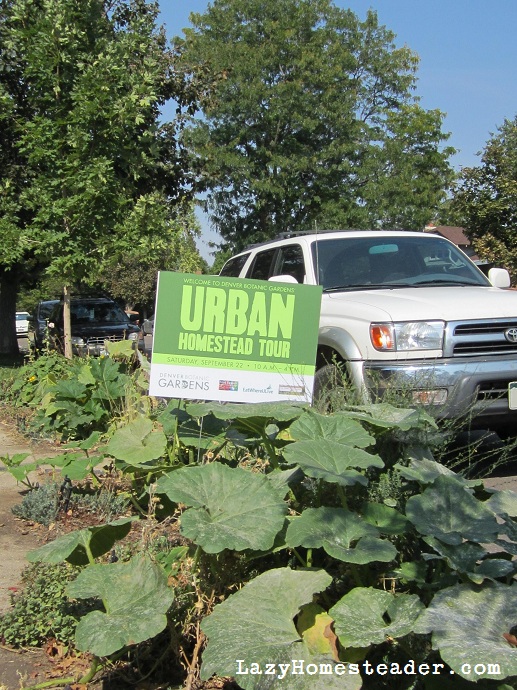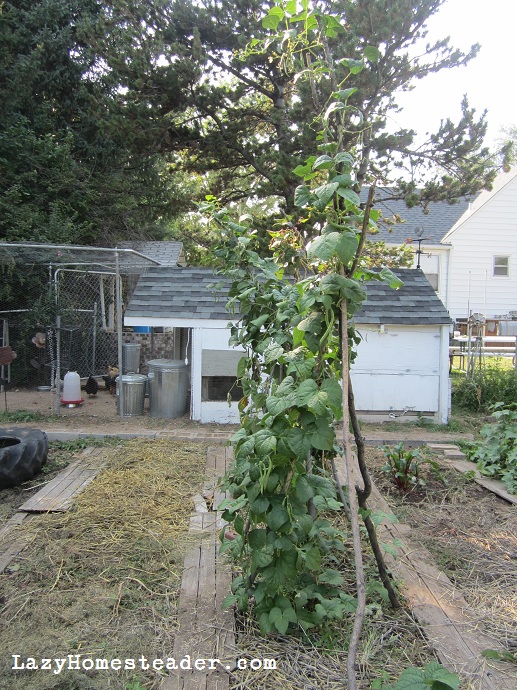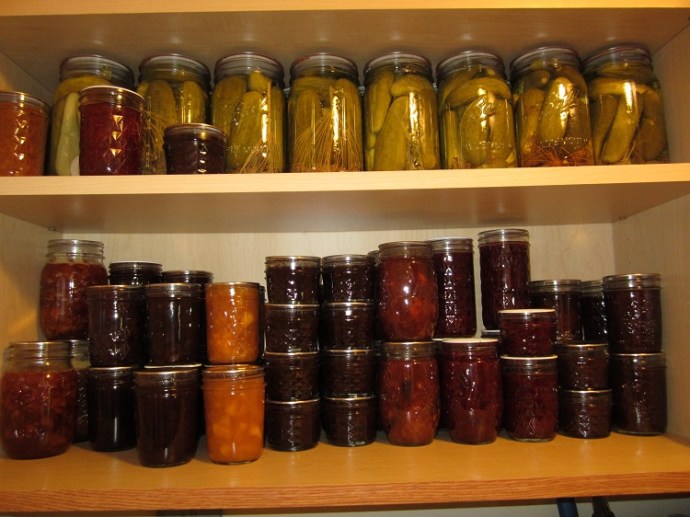Everyone in the household is seemingly well again, so urban homestead boot camp is back in session!
After a garden, when someone mentions “urban homestead” many people think of chickens. To me, chickens are a bit of the country right here in the city. They aren’t particularly noisy, they don’t take up much space, and it doesn’t cost much to feed them (ever heard the expression “chicken feed?”).

I have an awful lot to say about backyard chicken keeping. Enough probably to fill a book. It’s fun and the eggs are well worth the effort you put in. In order to keep this post from becoming a novel, here are the down and dirty basics of urban chickens. I am, of course, not an expert. We’ve had chickens for five years now. We’ve encountered a few problems and we’re continually learning as we go. But if you’re looking at getting birds for the first time, here are some basic guidelines.
The Rules
First off, are chickens allowed where you live? Check your city ordinances. There are usually stipulations on the number of birds, the size of area required for them and in some municipalities, there may be a permitting process. You can sometime skirt your HOA if they only stipulate the number of “pets” allowed and not what kinds.
Last month, The Crunchy Chicken had a guest post about what to do if your neighbors or HOA is not on board with your backyard flock.
Getting your neighbors on board is pretty important. Luckily, it’s a pretty easy thing to do as well. All of our neighbors love our hens. The kids especially. And the promise of fresh eggs are a great way to build some good will between neighbors.
You might be surprised where chickens actually are allowed. Highlands Ranch, here in Colorado, for example is chock-full of HOAs, and they totally allow chickens. So check it out.
This link has lots of city codes listed, but not every city. A Google search will help if it doesn’t have your city.

The Birds
For most backyard flocks, you’ll want only female chickens. Roosters are loud and crow all day, making it tough to stay on your neighbors’ good sides. Plus they’re generally not very friendly. Despite the fact that everyone wants to ask you how you plan to get eggs without a rooster, you don’t need one. Without a rooster, all your eggs will be unfertilized and you’ll get to skip the 4:00 AM wake up calls (and at 11:33, and at 3:28, and at 6PM).
You can start your flock by getting chicks, started pullets, or hens. Chicks are the least expensive, but you will need to raise them indoors under a heat lamp until they have grown all their feathers and can move outside, which will take a few months. Pullets are female chickens that are less than a year old. They will cost you more than chicks but you’ll get eggs sooner, since most chickens begin laying around six months old. Or you can buy grown hens that are already laying. They will be the most expensive since someone else has fed and housed them for a year with little benefit of getting eggs. You probably don’t want to buy hens that over two years old if you want many eggs though. Their peak laying years are the first two (from age 1-3 years).

You can order chicks in the mail or buy individuals at a feed store or from a local farmer. There is only one site that I know of that will ship chicks in quantities less than 28. We bought our chicks locally, so I can’t say how they do this.
Pullets and hens can also be bought from local farms, sometimes on craigslist, or at markets or poultry swaps. Chickens are social, so you’ll probably want at least three or four.
There are lots of breeds of chickens. If your climate is cold in the winter, you will want a heavy breed that can keep its self warm. Bantams are miniature chickens and their eggs are about half the size of regular chicken eggs.

The Coop
Your birds need about two square feet apiece inside their hen-house. It needs to have a roost and they’ll want a place to lay their eggs. The size, shape and style of your house and coop are limitless. Check out some of these ideas for small backyard coops.
Coops are easy to build yourself if you are the handy type, or small ones can be bought locally or online for a few hundred dollars. We built our coop ourselves and over the last five years have made only some minor modifications. (Though I admit I have a few more in mind for this coming year). I’ve seen people convert dog houses, old sheds and abandoned campers into chicken coops.
The original construction of our coop looked like this: Coop Construction!
The main things to keep in mind are a place to rest, a place to nest, a place to get shelter and a way to keep predators out. Many people advise using hardware cloth to keep raccoons out. We have been successful with simply using chicken wire, which is much less expensive. Although we’ve had chickens killed by foxes and raccoons, it was never due to a breach in the security of the coop, only due to the negligence of the chicken owners (we forgot to close the coop at night).
A chicken tractor is like a mini coop on wheels with a run attached that can be used to let your hens graze or catch bugs and then moved to a new spot so that they don’t eat the grass down to the dirt. A great idea if you have the room for it. Check out some neat ones here.
The Food
Chicken are omnivores. I always sort of chuckle when I read “vegetarian fed hens” on a carton of eggs. Now that’s good in commercial eggs, so that you know those poor birds weren’t fed other chickens. But your chickens will certainly not be vegetarians. They will eat bugs and worms, and I’ve heard they can catch and kill a mouse.
For the bulk of their diet, however, you’ll want to feed them something. You can make your own food for them using a mix of grains and seeds. A quick Google search will lend you many guides and recipes. Depending on your resources this might be less expensive than buying pre-made food. For some it is expensive if you’re in a big city far from where the grains are grown, and so it is easier to buy the bagged stuff.

Pre-made choices include conventional, organic, medicated, pellets, crumbles, mash and if you’re lucky, whole grain. Most backyard flocks don’t need medicated feed, even for chicks. These feeds are made for large, commercial flocks, where chickens are kept in too-close quarters and make each other sick. There is no need to dose your flock with antibiotics out of the gate with only three or four or twelve birds.
Pellets, crumbles and mash are different forms of the same feed. The ingredients in the feed are ground up and then pressed into shape before being packaged. The shapes are self descriptive. These are a matter of personal preference since chickens will eat all three. It comes down to what you prefer and how much the birds waste. My birds have always flung feed out of the feeder, but if the feed is pellets, they still get eaten off of the ground. All of these feeds are susceptible to moisture. If they get wet, they will pretty much disintegrate. So store it where it will stay dry, and keep a cover on your feeder if it is outdoors.
Conventional chicken feed is the least expensive but carries the risk of chemical pesticides, fertilizers and GMO ingredients. Since here in the US, they don’t label those things on human food, they certainly won’t on chicken food. If you want to avoid these (remember, your chicken is making eggs with that food, and you will eat the eggs), you should buy organic. It can be more expensive than conventional feed, unless you can find a local source. We have found a local farm co-op that offers us organic, whole grain layer feed for 43 cents/pound.
Your chickens are great garden disposals as well. They love to eat greens, weeds, kitchen scraps. I’ve often joked that they are like miniature pigs. The only things I have not seen our hens devour are potato peels and mushrooms. Otherwise, they will pick clean a ham bone as quickly as they will hork down mushy strawberries. They stick their skinny necks through the fence to attack our Swiss chard on a regular basis, and they practically live in the compost pile during the winter.

They will eat eggs. And if you cook them scrambled eggs, that’s fine. They don’t identify an egg smashed flat on the ground as the same as an egg they just laid (they are not the brightest creatures). But be cautious. If they get a taste for raw eggs, soon they will be plundering their nests and eating more eggs than you.
Crushed eggshells are a good supplement for them to get calcium in their diet (to make strong shells). You can also offer crushed oyster shell, whey, other dairy products and leafy greens. They’ll chow down and thank you.
The Work
You know how my site is called The Lazy Homesteader? Well, it’s because I really don’t like anything that is complicated, hard work, or lots of maintenance. The main work in caring for chickens, I’ve found, is making sure they have fresh water everyday. They need it replenished often in hot weather and they need the ice chipped off in the cold. So every day, they need water. That I can do, if Rick is helping me. 😉
Their feeder holds enough food for a few days, so I just check it when I’m giving them water to make sure it’s not empty yet. And I collect eggs.
Your hens will eventually molt. This is when they lose and regrow feathers and take a break from laying, and typically happens in the winter. The molt is dependent upon hours of daylight, so if you want eggs year round, they need a light in their house to trick their bodies during the winter. We’ve found that they don’t need it to keep warm (admittedly we don’t have ice storms here, so I can’t speak to that), but their feathers and group body heat seems to do the job. We let them take a natural break from laying and don’t provide a light in the winter.
Cleaning the coop is the other main work of keeping chickens. We use a deep litter method and only clean a couple of times a year. We’ve found this doesn’t work that well with straw as the coop bedding. It is great however with leaves or pine shavings. During the first chicken coop tour, everyone remarked on how nice our coop was – that it didn’t smell at all. But then one time we decided to try straw. The coop stunk within the week. It was a horrible stinky ammonia smell. And messy. They straw went everywhere. A breeze blew it all over the yard. It was slippery to walk on. We switched back to dried leaves and pine shavings. Later this week, I’ll explain the deep littler method in detail. Others do use straw and change their hens bedding daily. Still others use sand. Find what works for you.
That is basically it. This week, I’ll cover more chicken keeping things in detail. This is a big topic, and I know this post is pretty general. It may be elementary for old hands, but hopefully it answers some of the questions first timers might have.






























































